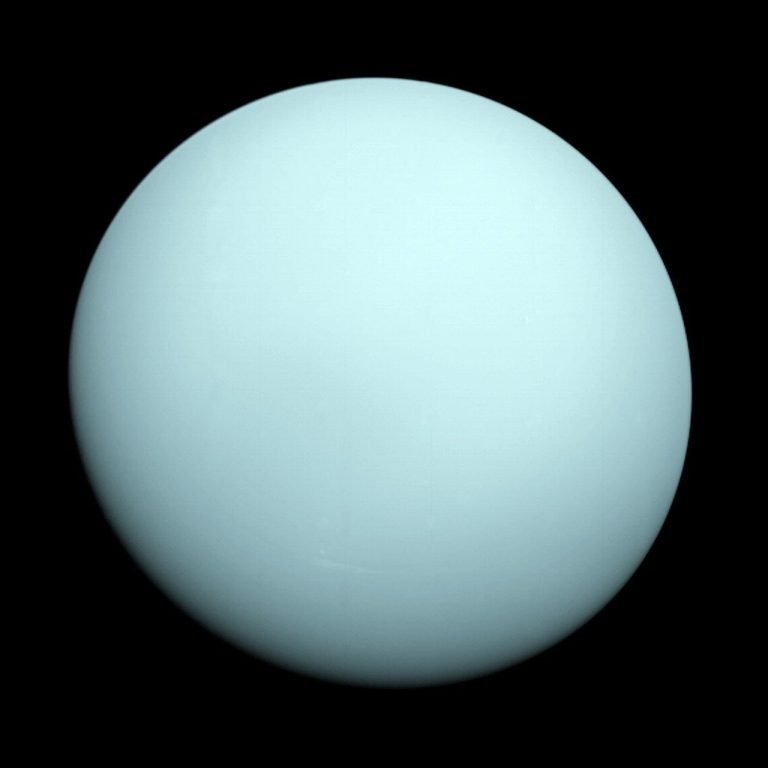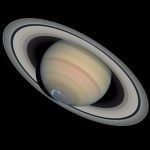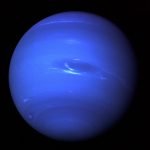Uranus is one of the most unique and intriguing planets in our solar system. Known as an ice giant, it stands out due to its unusual tilt and stunning blue color. In this post, we will delve into what Uranus is, its physical characteristics, its orbit, and some fascinating facts that highlight its significance in the cosmos.
What is Uranus?
Uranus is the seventh planet from the Sun and is classified as an ice giant. This classification is due to its composition, which includes water, ammonia, and methane ice. Its striking blue appearance is primarily caused by the presence of methane in its atmosphere.
- Size: Uranus has a diameter of about 31,518 miles (50,724 kilometers), making it the third-largest planet in our solar system. It is nearly four times wider than Earth.
- Surface: Like other gas giants, Uranus does not have a solid surface. Instead, it has a thick atmosphere made up of hydrogen, helium, and methane gases, which create its characteristic color.
Uranus’s Orbit
Uranus orbits the Sun at an average distance of about 1.8 billion miles (2.9 billion kilometers). It takes approximately 84 Earth years to complete one orbit, which means a year on Uranus is much longer than a year on Earth.
- Day Length: A day on Uranus (the time it takes for the planet to rotate once on its axis) is about 17.24 hours. This rotation period is relatively short compared to its long orbital period.
- Seasons: Uranus has a tilt of about 98 degrees, which means it rotates on its side. This extreme tilt results in unique seasonal changes, with each pole experiencing 42 years of continuous sunlight followed by 42 years of darkness.
Unique Features of Uranus
Uranus has several unique characteristics that make it different from other planets:
- Tilted Axis: Uranus is the only planet in the solar system that rotates on its side. This unusual tilt affects its weather patterns and seasons, making it one of the most peculiar planets.
- Ring System: Uranus has a faint ring system made up of icy particles and dust. These rings are not as prominent as those of Saturn but are still an essential feature of the planet.
- Moons: Uranus has 27 known moons, with the five largest being Miranda, Ariel, Umbriel, Titania, and Oberon. Each moon has unique characteristics and surface features, making them intriguing subjects for study.
Read This Also: Planet Saturn: The Jewel of Our Solar System
Interesting Facts About Uranus
Here are some fascinating facts about Uranus that showcase its uniqueness:
- Cold Temperatures: Uranus is one of the coldest planets in our solar system, with average temperatures dropping to around -357 degrees Fahrenheit (-216 degrees Celsius). Its frigid atmosphere is primarily composed of hydrogen and helium.
- Dark Rings: Uranus’ rings are dark and faint compared to those of other gas giants. They were discovered in the early 1980s and consist mostly of ice particles.
- Magnetic Field: Uranus has a peculiar magnetic field that is tilted about 59 degrees from its rotation axis. This magnetic field creates unique interactions with the solar wind, leading to interesting auroras on the planet.
- Lack of Heat: Unlike other gas giants, Uranus does not emit much heat. Scientists believe this is due to its lack of internal heat sources, which contributes to its cold temperatures.
- Voyager 2: The only spacecraft to visit Uranus was Voyager 2, which flew by in 1986. This mission provided valuable data and images of the planet, its rings, and its moons.
Why is Uranus Important?
Studying Uranus is crucial for several reasons:
- Understanding Ice Giants: Uranus serves as a key model for understanding ice giants, a category that includes Neptune as well. These planets provide insights into the formation and evolution of gas giants in the universe.
- Planetary Formation: Uranus’s unique tilt and composition help scientists understand the processes involved in planetary formation and the dynamics of the solar system.
- Exploration Opportunities: Exploring Uranus and its moons could provide valuable data about the conditions in the outer solar system, contributing to our knowledge of planetary science.
Conclusion
Planet Uranus, with its mysterious characteristics and stunning blue color, is a captivating subject of study in our solar system. Its unique tilt, ice giant classification, and intriguing moons make it a focal point for scientists and space enthusiasts.
The next time you look up at the night sky and ponder the vastness of the universe, remember that Uranus is out there, spinning on its side and holding secrets waiting to be uncovered. By studying Uranus, we enhance our understanding of the universe and our place within it, paving the way for future exploration and discovery. Understanding Uranus is essential for the future of space science and our quest to explore the far reaches of the cosmos.




